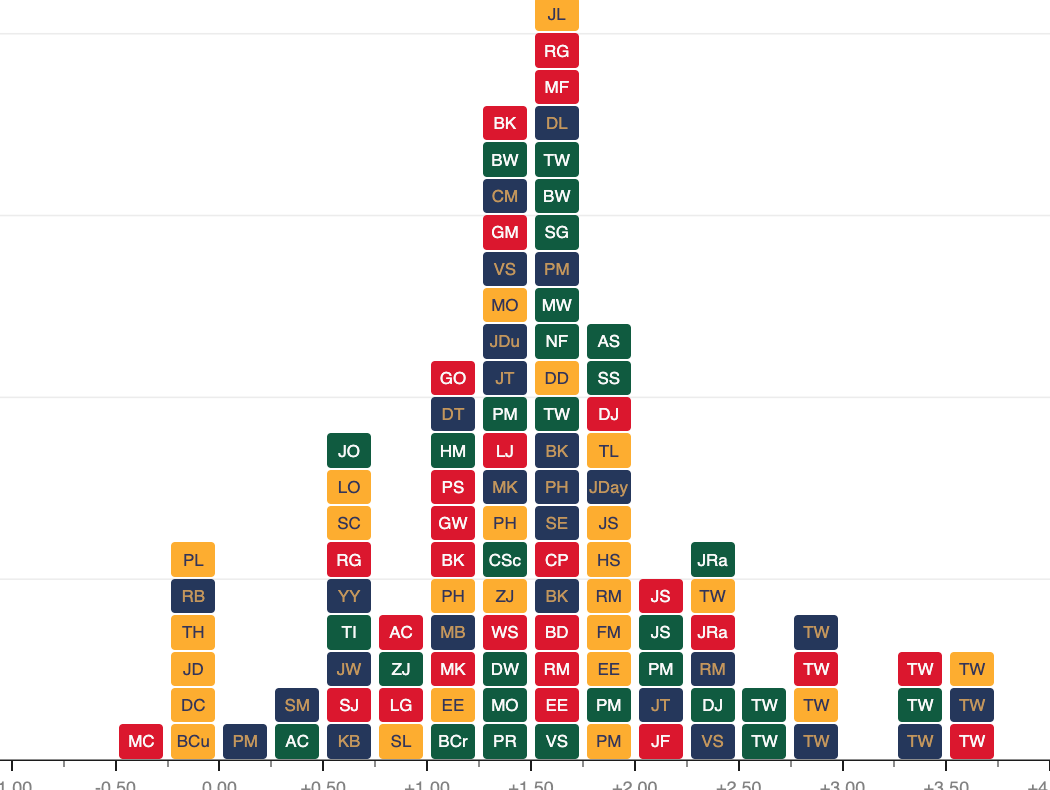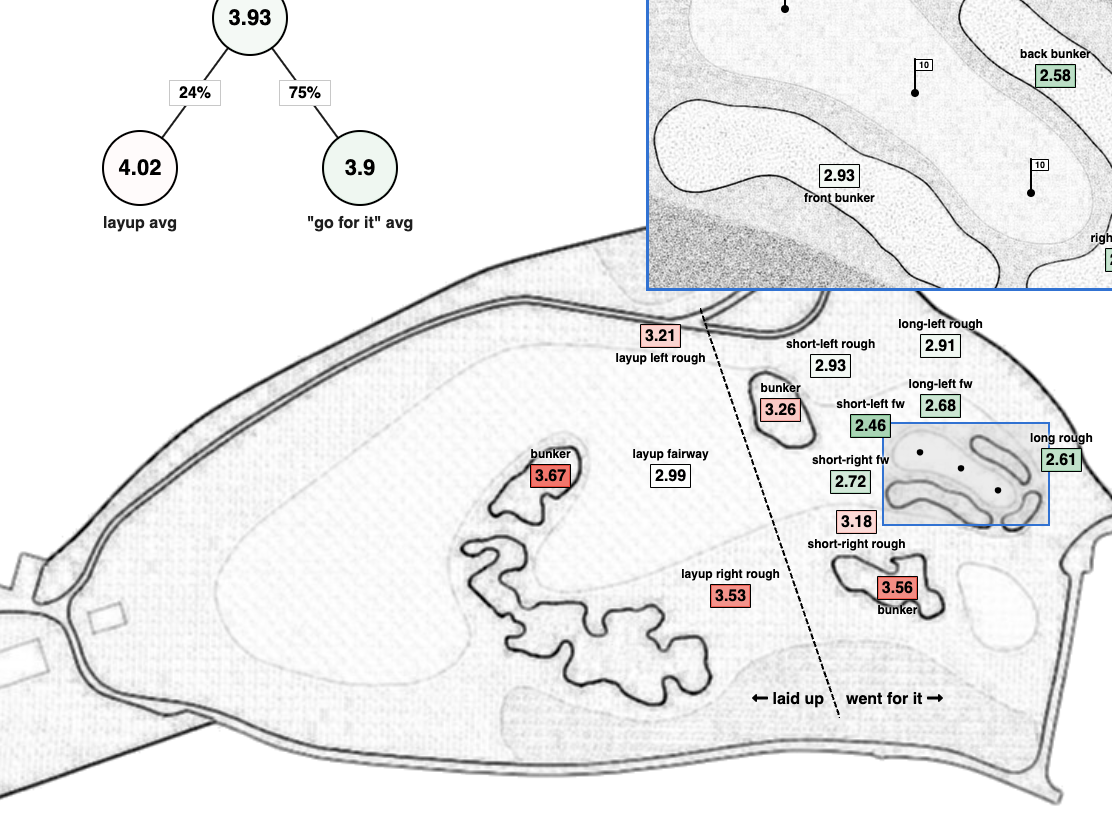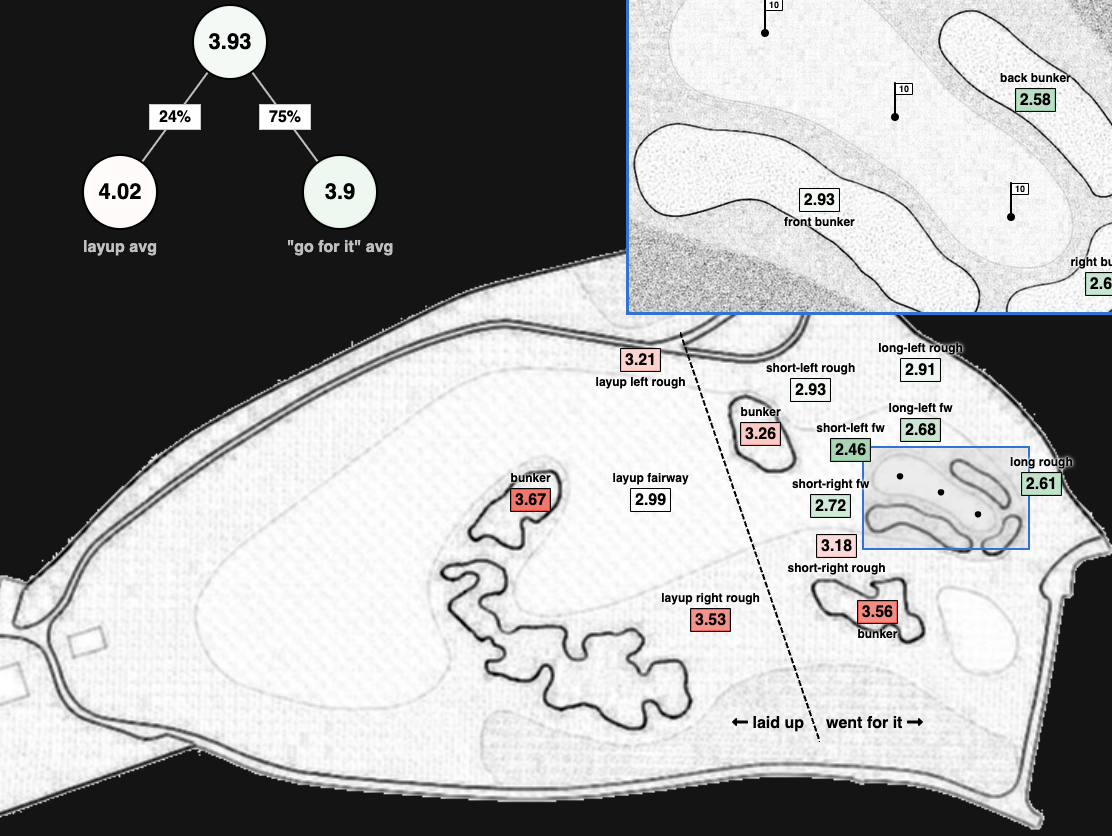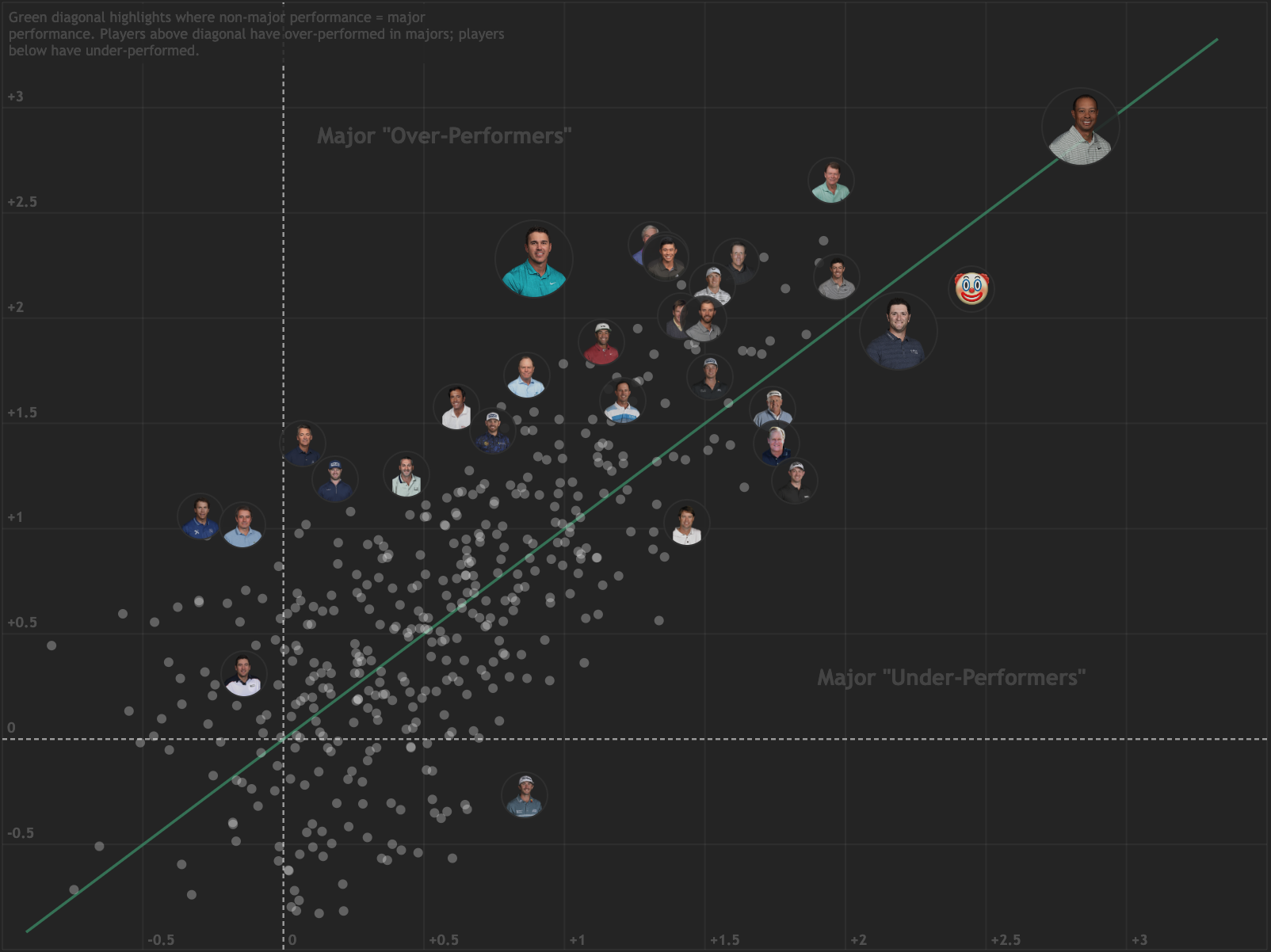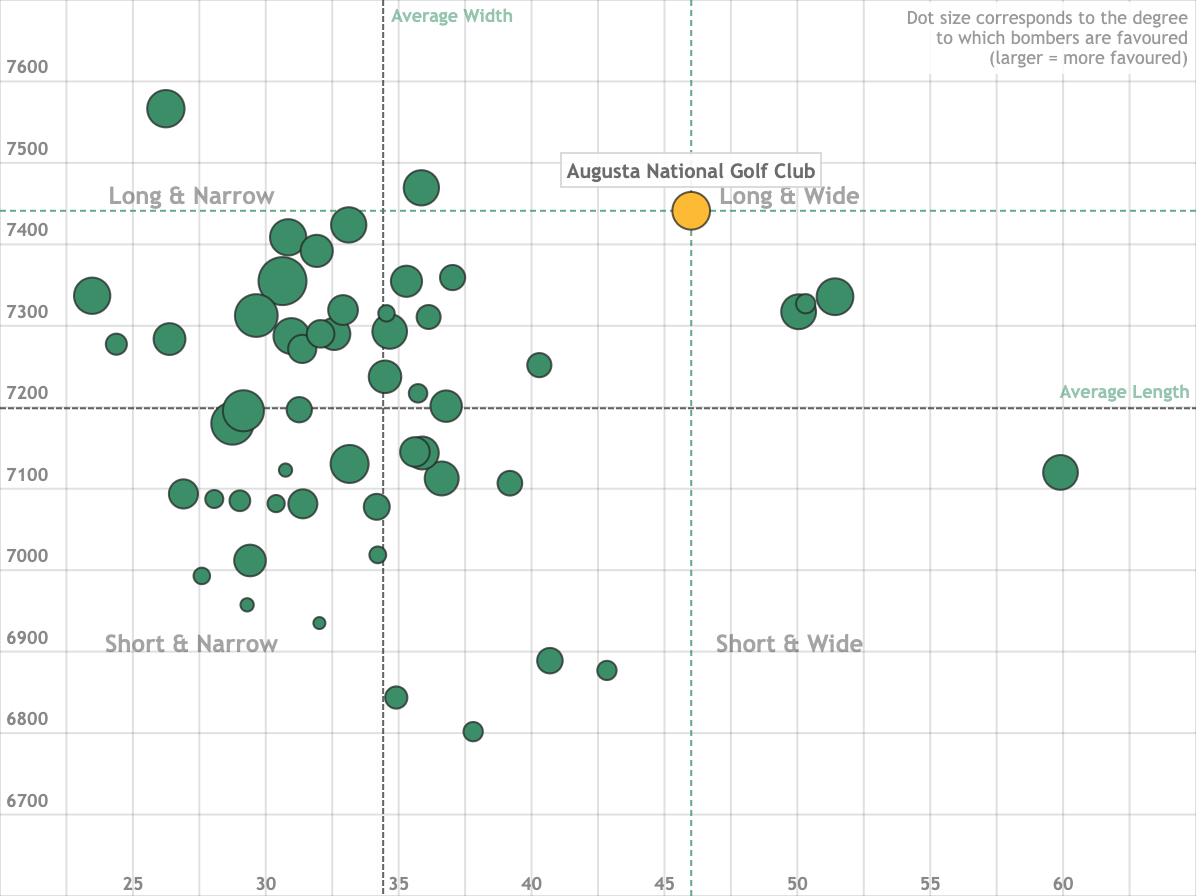
 I.T.N. No. 4
I.T.N. No. 4PUBLISHED May 27, 2019
Inside The Numbers ...
is a brief numerical summary of the current happenings in the world golf, published every Monday — hopefully.
+1.45 TRUE STROKES-GAINED
Scottie Scheffler is currently playing full-time on the Web.com Tour,
but he is performing at a level consistent with the upper echelon
of the PGA Tour. Scheffler has gained 2.45 strokes per round over the fields
he’s competed against in his last 20 rounds, which translates to an
average of +1.45 true strokes-gained
in that stretch.
This is
tops
amongst Web.com players and 24th best globally.
For reference, there are typically
only 5-10 Web.com golfers
who perform better than the average PGA Tour player
(i.e. have a positive true strokes-gained average throughout the year)
in any given season.
1764 DAYS
Mike Weir made the cut at last week’s Charles Schwab Challenge.
The last time he accomplished this in a non-opposite-field PGA Tour
event was at the 2014 RBC Canadian Open, fully 1764 days ago.
(Weir did make the cut at the PGA Tour’s Corales Championship in 2018
and the Barracuda Championship in 2014, both of which occur opposite
to other PGA Tour events.) Weir’s slump has been largely the
result of an uncooperative driver, as the following plot shows:
When PGA Tour players really lose it, it is often the result of an inability
to get off the tee (see
Smylie Kaufman,
and Steven Bowditch).
Weir is now trending in the right direction however, performing at close
to the level of an average Web.com player
over his last 50 professional
rounds, and having made it through qualifying to earn a spot in this year’s U.S. Open.
It would be great to see the Canadian playing more weekends on the PGA Tour in the near future.
0.15 STROKES BELOW EXPECTATION
Tiger Woods has done pretty well around Muirfield Village over the years,
winning Jack’s tournament 5 times — including 3 straight from 1999-2001 — and never
failing to play the weekend. Therefore it may surprise you that Woods has
actually performed
0.15 strokes
per round below his expectation at Muirfield Village. That is, compared
to his performance level at all other courses, Woods’ has
underperformed historically at Muirfield Village.
For example, in 2007 Woods’ baseline skill level (that is, his expected performance level)
was about 3 strokes better than the average PGA Tour player at the time;
Tiger finished T15 at the 2007 Memorial, gaining 2.5 strokes per round
over the average pro — 0.5 strokes per round below expectation.
Woods has also had some forgettable moments at Muirfield Village,
including a tidy 85 in the 3rd round of the 2015 tournament.
Removing that round would bring Woods’ career performance at
Muirfield to 0.07 strokes per round above expectation (but, what
is the justification for removing this round?).
52 RANKINGS POSITIONS
Lucas Glover is ranked as the 24th best golfer in the world according
to our rankings.
According to the Official World Golf Rankings
however, Glover is ranked as the 76th best golfer; a difference of 52 positions.
What is the source of this discrepancy? Without digging too
deeply into the data, we can likely attribute this to the
fact that Glover has not had many high-end finishes (a T4 at the 2019 Honda Classic
is his highest in the last 2 seasons).
Because the OWGR point distribution
is more heavily weighted towards the top finish positions
than a pure strokes-gained approach would predict (we documented a
similar phenomenon
with prize money), Glover’s recent
performances will be undervalued by the OWGR relative
to our adjusted strokes-gained rankings.
+0.56 STROKES-GAINED TEE-TO-GREEN
Jordan Spieth is seemingly back on the right track after finishing
T3 at the PGA Championship and following that up with a
T8 at last week’s Charles Schwab Challenge. However,
this has mostly been due to a hot putter, as Spieth
gained just 0.56 strokes tee-to-green per round
over these 2 weeks (in addition to 2.31 strokes-gained on the greens).
To put that into context, if our model was to only use total scores
to assess Spieth’s ability it would rank him
27th in the world;
by incorporating performance in the specific strokes-gained
categories, Spieth’s rank falls to 42nd in the world. This
is due to the fact that putting performance is higher
variance, and therefore more prone to short-term
fluctuations that do not reflect true changes in skill.
In other words, it remains to be seen whether Spieth’s improved putting is here to stay.
I.T.N. ARCHIVE
RECOMMENDED BLOGS
Recent Blog Posts
Model Talk Blog
Does our model overvalue leaders?

 Data Visualization Blog
Data Visualization Blog
Skill Distribution of Major Champions
